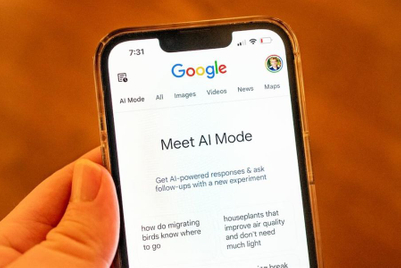.png&h=570&w=855&q=100&v=20250320&c=1)
In 1870, the founder of Angostura Bitters died and passed the business on to his sons. They rebranded, with one brother designing the label and another sourcing the bottle. Without collaborating, they mistakenly ended up with a print too big for the glass.
But someone gives them sound advice: make the label your signature.
A century and a half later, we would call it a distinctive brand asset. An error that is far more interesting and valuable than if they’d done it “properly”. And still stands out on bar shelves today.
This might sound oxymoronic coming from a strategist, but it’s better to be interesting than right. We spend too much effort pursuing the right thing over the interesting thing. The result is boring and our job is to make ads that aren’t boring—in fact, make it the opposite of boring.
An ad that’s strategically correct, which is also uninteresting, is ignorable and forgettable. Unlike the 1870s, we now have decades of marketing science which tell us this is not the most effective way to be effective. The principles have never been clearer—grab attention, seek fame, and be memorable. Understand the convention, then break it.
2023’s The Extraordinary Cost of Dull report suggests dull ads must invest 6.1x more in media than interesting ones to deliver the same results. It’s a pretty compelling reason even your CFO would buy, to be less “right”.
Here are a few recent crimes as marketers trip themselves face-first into the conventional. Firstly, the boringification of logos. To be readable on mobile screens, brandmarks across tech, auto and fashion all lose their distinctiveness.

Secondly, Lyle’s Golden Syrup—the world’s longest unchanging brand, after 140 years, replace their logo of a rotting lion corpse with something modern (read: like everyone else).

Thirdly, this building in the Sydney Harbour.

Okay, so that one’s not recent, nor is it real. It’s a render of what the Sydney Opera House could have looked like if the judges of the design competition had played it safe. Instead, they went interesting to much criticism at the time, and literally put Australia on the map.
A quote unquote ‘right’ decision, leads to a dull outcome. And as a result, your brand becomes a little more ignorable and a little more forgettable.
David Ogilvy got it. When shooting an ad for Hathaway Shirts, he asked the talent to put on an eye patch. With no rhyme or reason, or explanation. It’s simply more interesting with than without.

Likewise, Telstra’s recent Better On a Better Network campaign from Bears Meets Eagle on Fire and +61, is a bit wild and totally not consistent with where the brand has been for years. And maybe that’s why it’s so exceptionally good?
Remember, people in the real world don’t give a shit about your brand. Or your ads. You don’t build appeal with accuracy.
Of course I need to put in the caveats. Yes, you can’t be flat out wrong. But the opposite of right isn’t wrong, it’s just less right. And don’t go offensive for the sake of it. At TBWA we say “disruption not destruction.”
Our industry could afford to be a little less right. Even occasionally unhinged, while still strategic and still on-brand. But if I had to choose between a “right” ad that’s boring, and an interesting ad that’s not perfect, I’d choose the latter every time.
Sometimes you can achieve both. But often we trade one for the other, and we trade the wrong way. So inject some interesting into your brand. Hold onto your happy accidents. Or create some. Be a little bit weird, even if it feels random—especially if it feels random.
Zac Martin is planning director at TBWA Melbourne.




.jpg&h=334&w=500&q=100&v=20250320&c=1)
.jpg&h=334&w=500&q=100&v=20250320&c=1)
.jpg&h=334&w=500&q=100&v=20250320&c=1)
.jpg&h=334&w=500&q=100&v=20250320&c=1)
.jpg&h=334&w=500&q=100&v=20250320&c=1)







.png&h=268&w=401&q=100&v=20250320&c=1)
.jpg&h=268&w=401&q=100&v=20250320&c=1)
.jpg&h=268&w=401&q=100&v=20250320&c=1)
